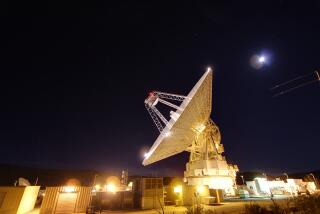Catastrophic Failure
The United States has spent $27 billion on missile-defense research since 1972, when it agreed with the Soviet Union to put strict limits on such defense systems. The Soviet Union has made a big investment of its own in defense experiments and a missile-defense ring around Moscow.
Washington must spend billions of dollars more--at a current rate of $4 billion a year--before it can decide whether to build a primitive shield over the United States in response to President Reaganâs dream of a so-called âStar Warsâ system that will make nuclear missiles impotent and obsolete. It would then need hundreds of billions of dollars to actually construct and launch some combination of sensors and weapons to shoot down incoming missiles.
Now the Office of Technology Assessment says that after all of that work and money there would be a very good chance that the defense system would âsuffer a catastrophic failureâ the first and only time it would ever be needed: if Soviet missiles were fired at the United States in anger.
The report is not the last word on Star Wars, only the most recent indication that the harder people outside of the Star Wars bureaucracy look at the project, the less they think of it. It has been clear for some time, for example, that Reaganâs vision of a leak-proof shield is beyond reach.
OTA, a think tank reporting directly to Congress, spent two years of research and analysis reaching its conclusions, which then were turned over to the Pentagon for security clearance.
The Pentagon, obviously put off by the reportâs dismal conclusions, kept the report out of circulation for nearly a year. After a summary of the report was printed in the Washington Post last Sunday, the Pentagon--in a display of hubris uncommon even in Washington--said that some of the more damaging criticisms of Star Wars were based on old information.
Because a Star Wars network would be the most complex system ever built, the report said, it may never be possible to depend without fear of failure on the computer software that would make it run. Certainly there is no sign that the software can be relied on in the foreseeable future, it said.
That is the answer to the question Reagan posed to scientists in 1983: Has the nation reached a level of technology where it could keep nuclear missiles from reaching its soil? It is not the one he wanted, but it still is the answer. The obvious next steps should start with a reduction of the Star Wars budget from nearly $4 billion to $2 billion or less, enough for basic research to make certain the Soviets do not get ahead in the field but not enough to support the razzle-dazzle public-relations stunts that are keeping the program alive in these days of tight budgets.
After that, American negotiators in arms-control talks in Geneva should join with Soviet negotiators in putting strict limits on how far or fast either country can proceed with programs that would lead to a separate new arms race, this one in outer space. That would not get back the $27 billion that has already been spent on missile defenses. But it might be a small price to pay for a move that would clear the way for deep superpower reductions in intercontinental missiles.
More to Read
Inside the business of entertainment
The Wide Shot brings you news, analysis and insights on everything from streaming wars to production â and what it all means for the future.
You may occasionally receive promotional content from the Los Angeles Times.










